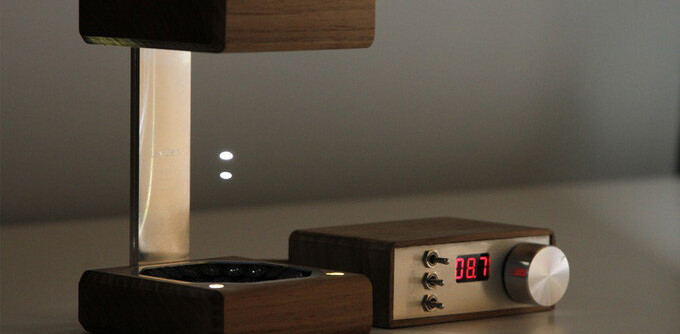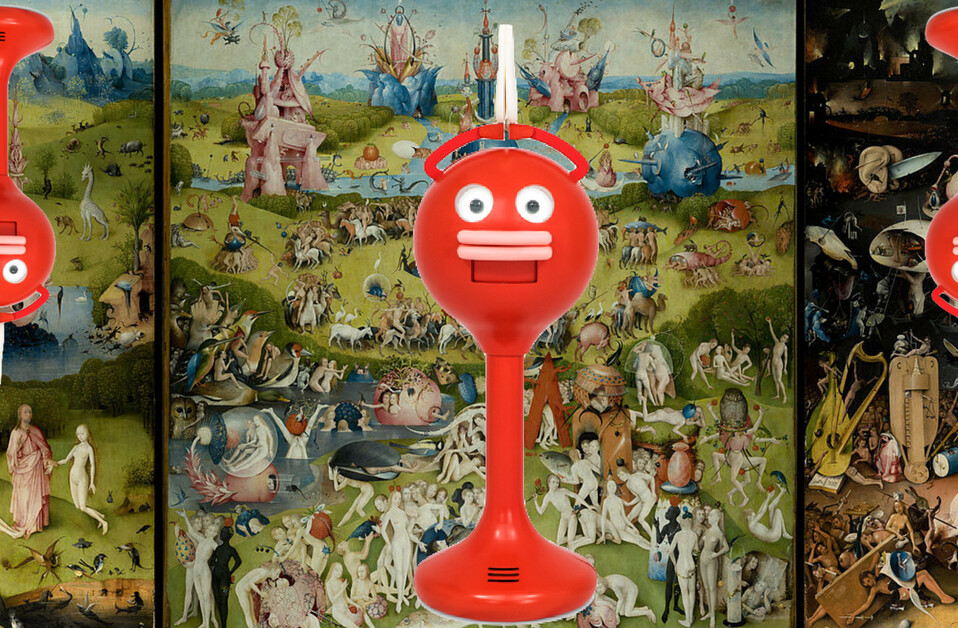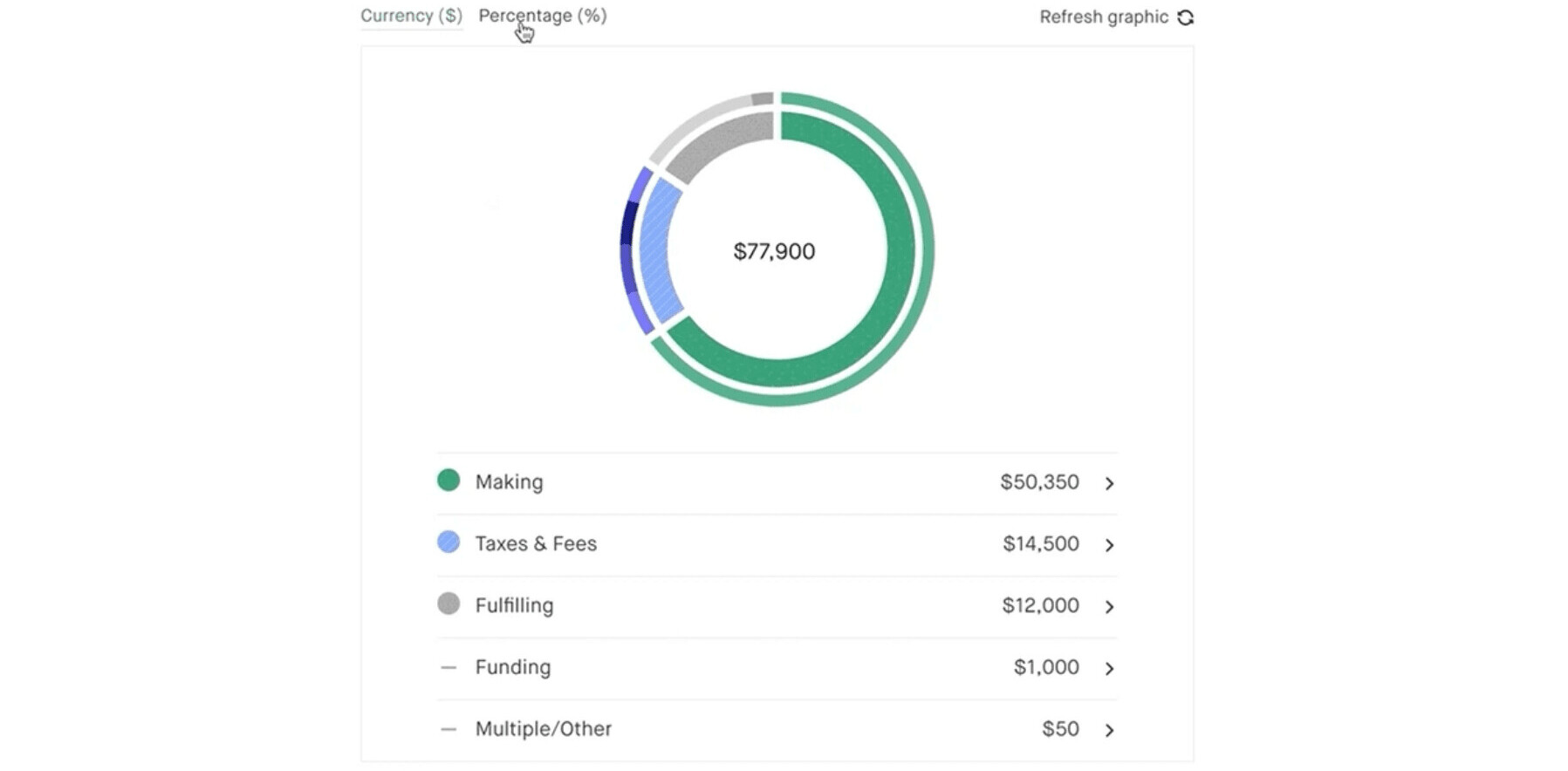
 Kickstarter, a funding platform for artists, designers, filmmakers, musicians, journalists, inventors, explorers and other creative types is one of those incredible start-ups that has the ability to spawn other start-ups. Founded in April 2009 by Perry Chen, Yancey Strickler, and Charles Adler, the site is undoubtedly one of the coolest growing businesses in New York City, which is why it made our list this year of 20 NYC Start-Ups You Need to Know About. Artists create videos to outline their projects, set fundraising goals and users come to the site to pledge money in exchange for rewards like small tokens of art, CDs, concert tickets, etc. instead of equity. The trick is, no one is charged and no one gets any money unless the full goal is met. If the goal is met, Kickstarter takes a 5% cut of all successful funding drives.
Kickstarter, a funding platform for artists, designers, filmmakers, musicians, journalists, inventors, explorers and other creative types is one of those incredible start-ups that has the ability to spawn other start-ups. Founded in April 2009 by Perry Chen, Yancey Strickler, and Charles Adler, the site is undoubtedly one of the coolest growing businesses in New York City, which is why it made our list this year of 20 NYC Start-Ups You Need to Know About. Artists create videos to outline their projects, set fundraising goals and users come to the site to pledge money in exchange for rewards like small tokens of art, CDs, concert tickets, etc. instead of equity. The trick is, no one is charged and no one gets any money unless the full goal is met. If the goal is met, Kickstarter takes a 5% cut of all successful funding drives.
This year, Kickstarter brought a crop of creative projects, and even more creative people to our attention. We’ve picked our ten favorite projects of 2010, some with a slightly techy bent for obvious reasons and some that are just badass and rad in their own right. Be sure to check out each project’s Kickstarter page for full details and video.
Projects Still Raising Funds:
Tech Entrepreneurs and US Immigration: A documentary
 Two of this year’s biggest themes were undoubtedly the bi-coastal explosion of the tech start-up scene and the drama surrounding the U.S. immigration policy. As written on the Kickstarter project site, according to a recent Kauffman study 99% of all US positive job creation in the last decade has been fueled by startups. In Silicon Valley, 52% of them were founded or co-founded by foreign entrepreneurs, according to TechCrunch. This project aims to combine those two aspects of our culture with several prominent interviews into a 25-35min documentary. And who better to lead the project than a man who was hacking circuit boards at age 8 and had built his own web hosting company by 14? Project leader Tarik Ansari studied abroad in England, Mexico and China before graduating from EFREI with a Masters in Computer Science at age 20. He now lives in the Bay Area. With 10 hours to go the project has received $1,955 and needs $2,000 for completion. I just donated. You should too, here.
Two of this year’s biggest themes were undoubtedly the bi-coastal explosion of the tech start-up scene and the drama surrounding the U.S. immigration policy. As written on the Kickstarter project site, according to a recent Kauffman study 99% of all US positive job creation in the last decade has been fueled by startups. In Silicon Valley, 52% of them were founded or co-founded by foreign entrepreneurs, according to TechCrunch. This project aims to combine those two aspects of our culture with several prominent interviews into a 25-35min documentary. And who better to lead the project than a man who was hacking circuit boards at age 8 and had built his own web hosting company by 14? Project leader Tarik Ansari studied abroad in England, Mexico and China before graduating from EFREI with a Masters in Computer Science at age 20. He now lives in the Bay Area. With 10 hours to go the project has received $1,955 and needs $2,000 for completion. I just donated. You should too, here.
Monster Maker

Derek Tonks makes monsters, really awesome monsters. For his recent Kickstarter project, he is building a full-size wearable monster suit. He’s already built “Digitigrade” Stilts, which add 12″ and an unnatural leg angle to the suit-wearer, as well as mechanical hands that will give the creature long extended fingers. Tonks plans to use one of his friends to create a full body life cast for the suit, then he will make fiberglass molds of the entire sculpture that will later be filled with high-quality flexible foam latex. Once the foam latex is cured, it will be removed from the molds, seamed, painted, and fitted with animatronics. The animatronics will be used to articulate the face via remote control servo motors. The kid has talent. And funding for this project is still underway! So far he has raised just north of $500 of his $3,500 goal. Donate and check it out here.
LUMI Mask
LUMI is a sleep mask that simulates sunrise, combining two existing products- sleep masks and sunrise clocks. Before sleep, you set a wake up time on the alarm controller. Then put the LUMI on, fall asleep and in the morning a light unit inside the LUMI simulates a sunrise 30 minutes before you wake. Because most of our sleep benefits come from optimizing our dark and light cues, the LUMI mask is a great option to get a good night sleep. LUMI will be compatible with the iPhone and other mobile devices through a receiver that will allow you to set your wake up time from your mobile device. With 24 days to go, idea man Taylor Franklin Hide has raised $5,987 of his $10,000 goal.
Successfully Funded Projects:
TikTok and LunaTik’s iPod Nano Watches
 In November, we featured TikTok’s iPod Nano Watch, which raised close to $1 million on Kickstarter, grabbing the spot for most money raised on the fund crowdsourcing site to date. Based on the idea that the world’s first multi-touch watch should be designed for the Nano, Scott Wilson, the founder of Chicago-based design studio MINIMAL, made two designs, the TikTok and its premier partner the LunaTik, which both transform the iPod Nano into the world’s coolest multi-touch watches. The watches are hardly just Nanos slapped onto cheap plastic. They are well designed; engineered and manufactured from premium materials that complement the quality of Apple products. The project raised $941,718 of its $15,000 goal.
In November, we featured TikTok’s iPod Nano Watch, which raised close to $1 million on Kickstarter, grabbing the spot for most money raised on the fund crowdsourcing site to date. Based on the idea that the world’s first multi-touch watch should be designed for the Nano, Scott Wilson, the founder of Chicago-based design studio MINIMAL, made two designs, the TikTok and its premier partner the LunaTik, which both transform the iPod Nano into the world’s coolest multi-touch watches. The watches are hardly just Nanos slapped onto cheap plastic. They are well designed; engineered and manufactured from premium materials that complement the quality of Apple products. The project raised $941,718 of its $15,000 goal.
Power Laces
Remember Marty’s power laces?
As part of an art project for a contest, artist Blake Bevin created a demo version of the power laces from spare parts. With Kickstarter’s help, she plans to develop and finalize a marketable version and mass produce power laces. The next version will operate under a different, more efficient mechanism, and will be more suitable for everyday use. The project raised $25,024 out of her $25,000 goal.
Delorean Hovercraft
Admittedly I, like most technophiles, have a soft spot for all things Back to the Future. It’s 2010, and California grad student Matthew Riese is rightfully asking “Where is my flying car, already?!” The fact that Riese wants to go into the custom hovercraft business is enough of a reason for me to help fund his project. Riese isn’t building a flying car exactly, but it is a step in the right direction. He is building a hovercraft that looks exactly like a Delorean. Two years ago, he started with a “rough draft” version and plans to use the $5,500 for construction materials and labor costs. When it is done, the craft will be able to hover on anything flat such as asphalt, sand or water, but it will be mostly driven in the San Francisco Bay area. According to Riese, “The hovercraft is registered with the DMV in California as a boat and it is not street legal. The top speed should be around 45 mph, which is pretty impressive for a vehicle with no brakes (it’s not touching the ground, remember!). If you have never seen a hovercraft, the basic concept is that a fan pushes air underneath the middle of the craft and a “skirt” (basically a flexible inner-tube around the perimeter of the craft) traps that high-pressure air under the craft, which lifts it off the ground. Some air is escaping under the skirt at all points at all times, so in theory, even the skirt isn’t actually touching the ground/water. A second fan pushes air behind the craft, driving it forward.” The project raised $5,644 of its $5,500 goal. Riese’s Delorean will not include a flux capacitor but it will probably get him laid.
ClockTHREE
ClockTHREE is a heady open source Arduino built, LED array that features a multi-color word clock, similar to QlockTWO. ClockTHREE is different because the 192 LEDs are individually addressable and programmable so this device will support several languages as well as any number of other applications. ClockTHREE is a cool platform for anyone wishing to explore time and color. The geeks behind it are also planning to build a sun clock that displays where on the globe the sun is currently shining and a thermometer that tells the temperature with words and color. The project was successfully funded. It raised $3,656 of its $1,111 goal.

The Glif
 The Glif, which we wrote about in November, is a simple, but highly useful tripod mount and stand for the iPhone4. Besides sounding quite Seussical, the Glif is actually incredibly useful. It has two primary functions: it mounts your iPhone to a standard tripod, and acts as a kickstand to prop your iPhone up at an angle. From these two functions emerge numerous uses: hands-free FaceTiming, watching videos, making movies, using your iPhone as an alarm clock among others. The Glif will be manufactured with a recyclable Santoprene (grade 101-87) hard rubber; a material that feels great to the touch, and holds the phone securely. $137,417 was pledged exceeding the project’s $10,000 goal.
The Glif, which we wrote about in November, is a simple, but highly useful tripod mount and stand for the iPhone4. Besides sounding quite Seussical, the Glif is actually incredibly useful. It has two primary functions: it mounts your iPhone to a standard tripod, and acts as a kickstand to prop your iPhone up at an angle. From these two functions emerge numerous uses: hands-free FaceTiming, watching videos, making movies, using your iPhone as an alarm clock among others. The Glif will be manufactured with a recyclable Santoprene (grade 101-87) hard rubber; a material that feels great to the touch, and holds the phone securely. $137,417 was pledged exceeding the project’s $10,000 goal.
SADbot

SADbot, or the Seasonally Affected Drawing Robot, is a solar-powered, interactive drawing machine created by Eyebeam artists and former ITP students Dustyn Roberts and Ben Leduc-Mills. In the photo above, two women pause to see a pen doodling across a canvas behind a window. When they touch little circles on the glass, the pen changes direction. SADbot uses an Arduino microcontroller, four photocell sensors, a battery, and two stepper motors to control two cables attached to a pen. The electronics receive power from solar panels on the building’s roof. But not only light powers the installation — it also affects SADbot’s behavior. Because it is solar powered, at night SADbot stops doodling and “goes to sleep.” But when the sun is out, SADbot lets people interact with it and doodles across a large canvas. “People are only happy when it’s sunny,” says Roberts. “Just like our robot.” SADbot was displayed this summer at New York City’s Eyebeam studio, an artist’s hub dedicated to the convergence of art and technology. SADbot raised $1,175 of its $1,000 goal on Kickstarter. Roberts, who also teaches at NYU’s ITP school included SADbot in her recently published book, titled Making Things Move.
Diaspora
I hesitated to include this on the list because when it launched in beta, I wasn’t impressed. In the aftermath of the Facebook privacy meltdown, Diaspora aimed “to be a distributed network, where totally separate computers connect to each other directly, will let us connect without surrendering our privacy. We call these computers ‘seeds’. A seed is owned by you, hosted by you, or on a rented server.” Since Diaspora won’t have access to user data, they can’t infringe on users’ privacy. The alpha product, released in late November failed to impress because it seemed like the kids had spent three months learning how to program more than anything else. But their story on Kickstarter was unbelievable. They launched their idea with a $10,000 goal to cover summer expenses to develop the app. By June 1st, Diaspora has raised a total of $200,647 collected from a total of 6,479 backers including Mark Zuckerberg himself. For now, I think that it’s going to take a lot of work to get it really right, but it’s a commendable start. The project in itself is groundbreaking. The question will come in keeping enough money to keep it running long enough to get more help in the door. See a screenshot of the app here:

What other projects on Kickstarter did you love this year?
Get the TNW newsletter
Get the most important tech news in your inbox each week.




